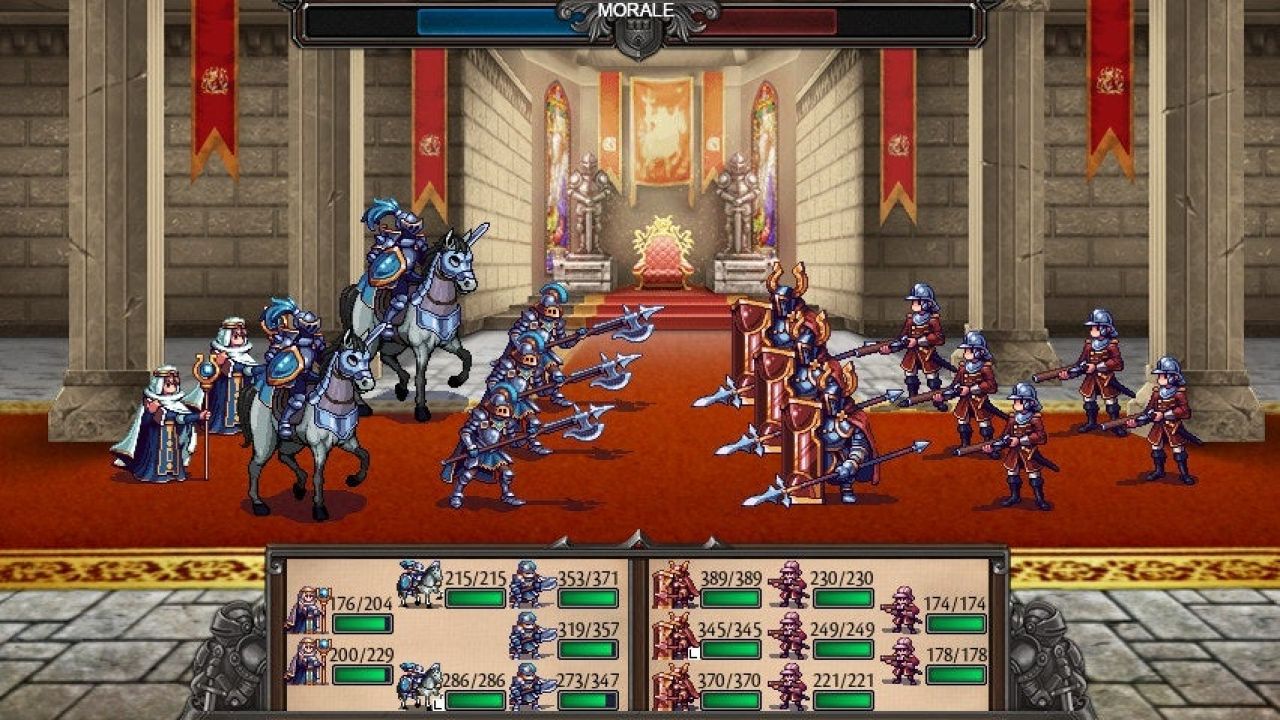There’s been a raft of intriguing strategy RPGs this year, but one of my favorites so far is Symphony of War. It’s been climbing the charts on Steam in recent months, and for good reason. From a distance it looks like another Fire Emblem knockoff. Up close it’s doing enough interesting things to stand on its own, and I really recommend you give it a shot.
Symphony of War: The Nephilim Saga quietly came out on Steam in June and has been racking up positive reviews ever since. Developed by an indie team called Dancing Dragon Games with a history of RPG Maker projects, it’s a trope-filled military drama about civil war and demonic threats. But you can pretty much ignore all that. Beneath the predictable plot and airbrushed character portraits is a deep strategy game that’s hard to put down. Personally, I think it’s even better in the strategy department than Triangle Strategy.
Make no mistake: Symphony of War is old-school. While newer entries in the Fire Emblem series have delved deeper into visual novel elements and relationship mechanics, it’s focused almost exclusively on renewing the nuts and bolts of classic grid-based battles. What works so well is that Symphony of War nails the basics and also adds plenty of new wrinkles for fans to dig into (especially those who also dug last year’s Dark Deity).
 Gif: Dancing Dragon Games / Kotaku
Gif: Dancing Dragon Games / Kotaku
The biggest one is that each individual unit represents an entire squad made up multiple types of fighters. Maybe there are some knights in front flanked by pikemen while wizards and archers rain down death from the back. When two units move next to each other and throw down, a mini-turn-based skirmish ensues. Mages in the back cast fireballs and healing spells while knights in the front dish out melee damage. Combat unfolds across two rounds, with attackers getting the first turn and the defending side going second. Some fighters can only attack on the first or second turn, while others will occasionally luck into a bonus turn. The action is easy to follow and yet also opens up plenty of room for customization.
Adding more subtle layers of complexity are unique fighter bonuses and an extensive research tree. Horseback fighters get to attack first without retribution. Infantry provide defensive bonuses to nearby units. And archers can naturally attack from a distance without facing counter-attacks. These and other stats can then be augmented and magnified by researching new tech. Rather than leveling up specific units, you’re growing the overall capabilities of your army.
 Screenshot: Dancing Dragon Games
Screenshot: Dancing Dragon Games
in this way Symphony of War forces you to sometimes think like a 4X strategist while playing like a traditional JRPG enthusiast. Instead of customizing one single party and fighting through a dungeon, you’re building up a small army of them and taking on a whole battlefield. Completing missions faster and capturing enemy units and buildings along the way nets you extra money and points that can then be poured back into outfitting your various crews. Just a few novel tweaks and the decades-old tactical JRPG formula feels fresh and modern again in 2022.
A few other games have also taken hybrid approaches to tactical RPGs recently. The Iron Oath and Songs of Conquest both come to mind. The former is a roguelike with battles that take place on a hexagonal grid. The latter also sports a hexagonal battlefield in service of map exploration and city-building closer to a 4X game. They’re really promising games in their own right (and still in Early Access), yet neither is as focused on plumbing the depths of leveraging small advantages so one group of animated sprites can wipe the floor with another.
Symphony of War is far from a perfect package, but it offers one of the more meaty and innovative takes on the tactics RPG formula I’ve come across in years.
